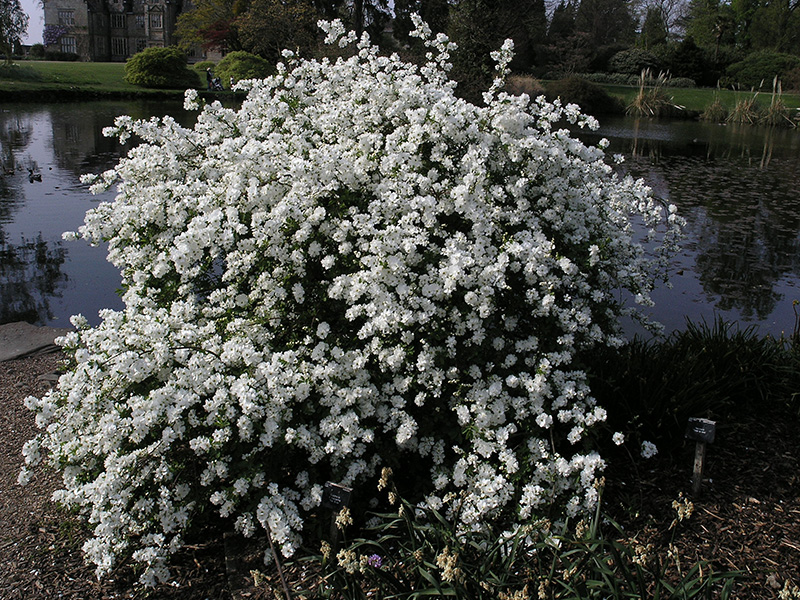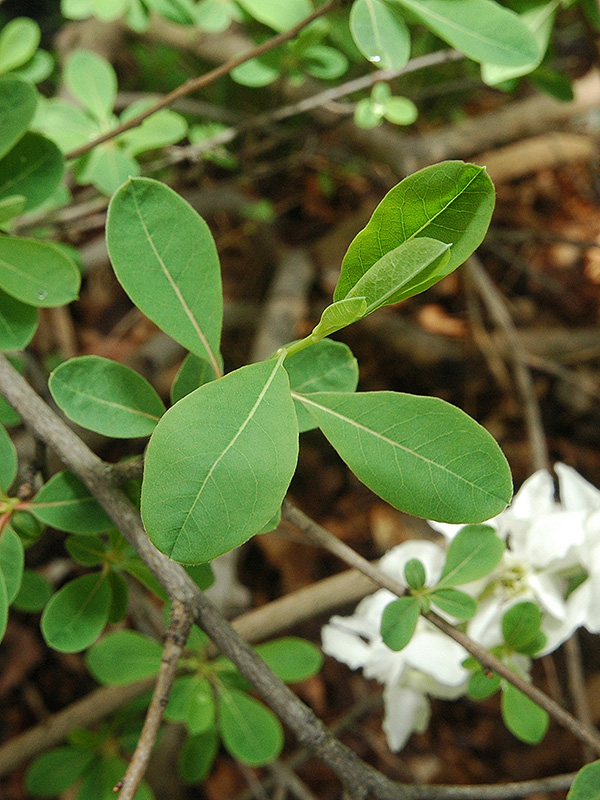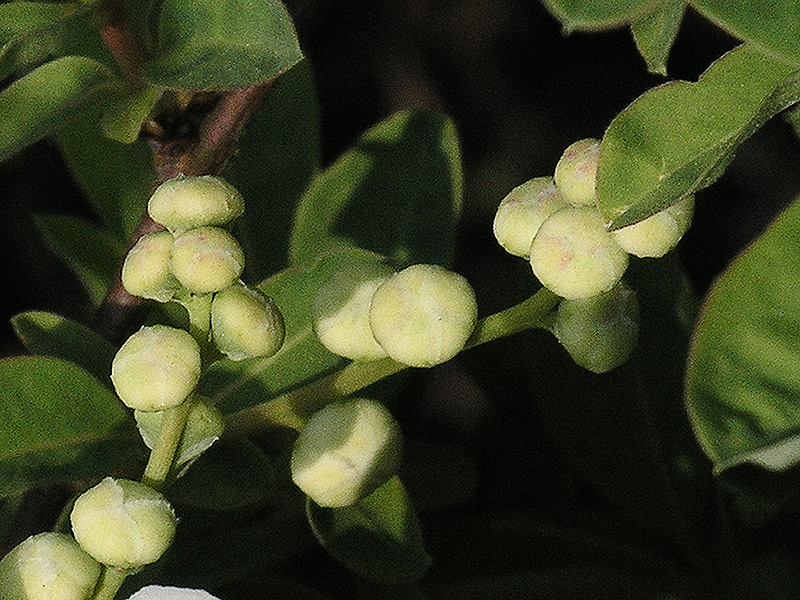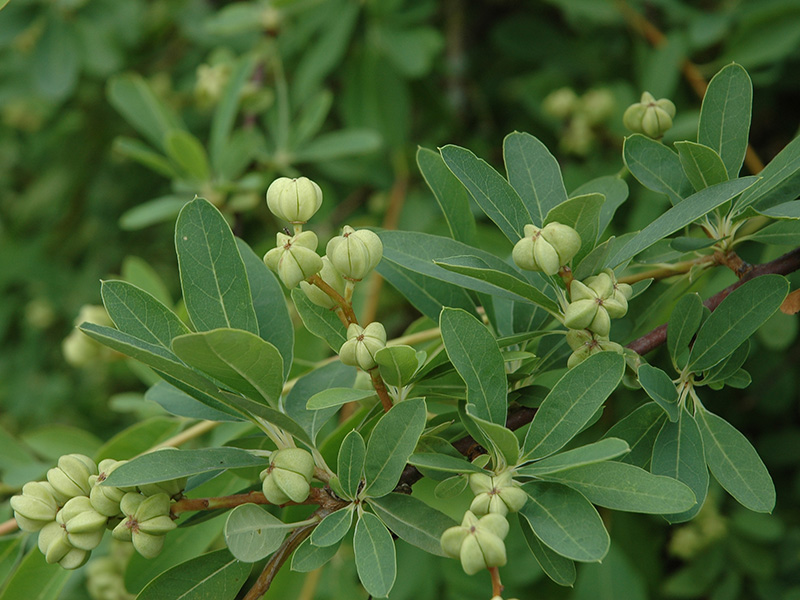
Woody > Exochorda > Exochorda x macrantha > Exochorda x macrantha 'The Bride'
Exochorda x macrantha
'The Bride'
The Bride Pearlbush
Origin: Horticultural origin, a hybrid between E. korolkowii and E. racemosa.
Mike's
Opinion


"
This is a plant that requires little attention to do well, in fact except for the odd branch being removed mine has performed flawlessly for the past 15 years. Flowering is extremely short (depending on spring temperatures) but the beauty it will add to your garden is what matters, mine when in flower is a show stopper. Used as a focal plant it is an easy shrub to hide or 'melt' into the background of the garden until ' it does its thing' the following spring.
Michael Pascoe, NDP., ODH., CLT., MSc. (Plant Conservation)
"
| Family |
| Rosaceae |
| Genus |
| Exochorda |
| Species |
| x macrantha |
| Cultivar |
| 'The Bride' |
| Category |
| Woody |
| Type |
| Shrub (deciduous) |
| Pronunciation |
| USDA Hardiness Zone |
| 6b - 7a |
| Canadian Hardiness Zone |
| 6b |
| RHS Hardiness Zone |
| H6 (observed growing well in H7) |
| Temperature (°C) |
| -20 to -15 |
| Temperature (°F) |
| 4 - 5 |
| Height |
| 1.2-1.8 m |
| Spread |
| 1.2-1.8 m |
Photographs
Description and Growing Information
Flowering Period
| General Description |
| A compact weeping shrub covered in small, brilliant white flowers. It is valued as an ornamental since it is tolerant of a wide variety of site locations and except for the odd light pruning it is relatively low maintenance. |
| Landscape |
| A stunning ornamental flowering shrub that may be used as a light informal hedge or an accent plant when in bloom. It is well suited to the mixed border since it is easily lost in plantings when not in bloom. A very hardy, low maintenance cultivar. |
| Cultivation |
| Tolerates most soil types and environmental conditions in partial or full sun. In the nursery it prefers to be container grown, as it does not transplant well although several sites on the internet report that it does: personal experience says otherwise. Plant it in spring so it has time to establish new root growth before winter. Prune young stem tips immediately after flowering to encourage new growth and promote overall tidiness and a more compact form. |
| Shape |
| Bushy, rounded and broad as it is tall. Has a tendency to weep and can be quite compact when given a light, corrective pruning. |
| Growth |
| Medium |
| ID Characteristic |
| The compact, densely clustered, white flower buds resembling pearls are its first ID characteristic, this is of course followed by the masses of white, 5 petaled flowers that literally envelop the plant. |
| Pests |
| None of note, the plant in my own garden has been growing unhindered for 15 years. |
| Habitat |
| Horticultural origin. |
| Bark/Stem Description |
| The bark is a light brown to grey colour with few lenticels. It becomes rough and scaly with age and somewhat attractive but usually is well hidden by the somewhat pendulous foliage and winter branches. |
| Flower/Leaf Bud Description |
| Ovoid, round, light brown in colour. |
| Leaf Description |
| Ovate to elliptical, entire leaves, 3 cm wide and to 8 cm long. Glabrous abaxially and adaxially. The leaves are light green in spring through summer. Autumn colour is negligible. |
| Flower Description |
| Each star shaped, pearl white, five petaled flower in clusters of 6-10 blooms is held on racemes that are 7.5-12 cm long. The flowering period is not particularly long lasting, approximately 7 - 12 days (depending on spring temperatures), but it is well worth the wait because every flower bud will bloom enveloping the plant. There is no fragrance to the blooms. |
| Fruit Description |
| Star shaped, five segmented, dehiscent capsule to about 8 mm wide,cream coloured but as it ripens becoming brown; persists on the shrub often through the winter. |
| Colour Description |
| White flowers and light green leaves. No significant autumn colour. |
| Texture Description |
| A rather fine textured shrub both in and out of leaf. |
| Notable Specimens |
| Fanshawe College, London, Ontario and Wakehurst Place, Ardingly, West Sussex, England. |
| Propagation |
| Softwood cuttings with a basal or hard-trimmed heel are most successful with IBA levels from 1,000-7,000 ppm. Seed germinates quite easily following a 60- to 90-day cold stratification but will not come true to type. Often my plant in the garden growing on light sandy soil drops seed which germinate each spring to the point that I always have plants to give away to garden visitors. |





